Managing objects and their state in an application is a central topic in object-oriented programming. Especially when it comes to serialization, it is crucial to understand how to effectively access and restore the state of objects. In this tutorial, we will learn how to optimize the serialization process using the sleep and wakeup functions in PHP, particularly in conjunction with databases.
Key Insights
- Serialization allows the state of an object to be saved.
- With the sleep method, you can determine which properties are included in the serialized state.
- The wakeup method allows the restoration of connections or states after deserialization.
- It is important to handle both login data and database connections correctly to ensure a stable state.
Step-by-Step Guide
1. Understanding Serialization
Before we turn to the specific methods, it is important to understand the theoretical foundation of serialization and our goal. Object-oriented programming (OOP) in PHP allows you to manage objects and their states easily. In cases where you want to persist objects, serialization comes into play.

2. Creating a Database Connection
Let's simulate a database connection in our PHP object. First, you need to define the necessary variables that will serve as the basis for our object. This includes a username, a password, and a connection to the database.
3. Defining the Constructor and Connection Logic
In the next step, we will add a constructor that is automatically called when the object is created. Within this constructor, you can call the method to establish the connection so that the connection is initiated.
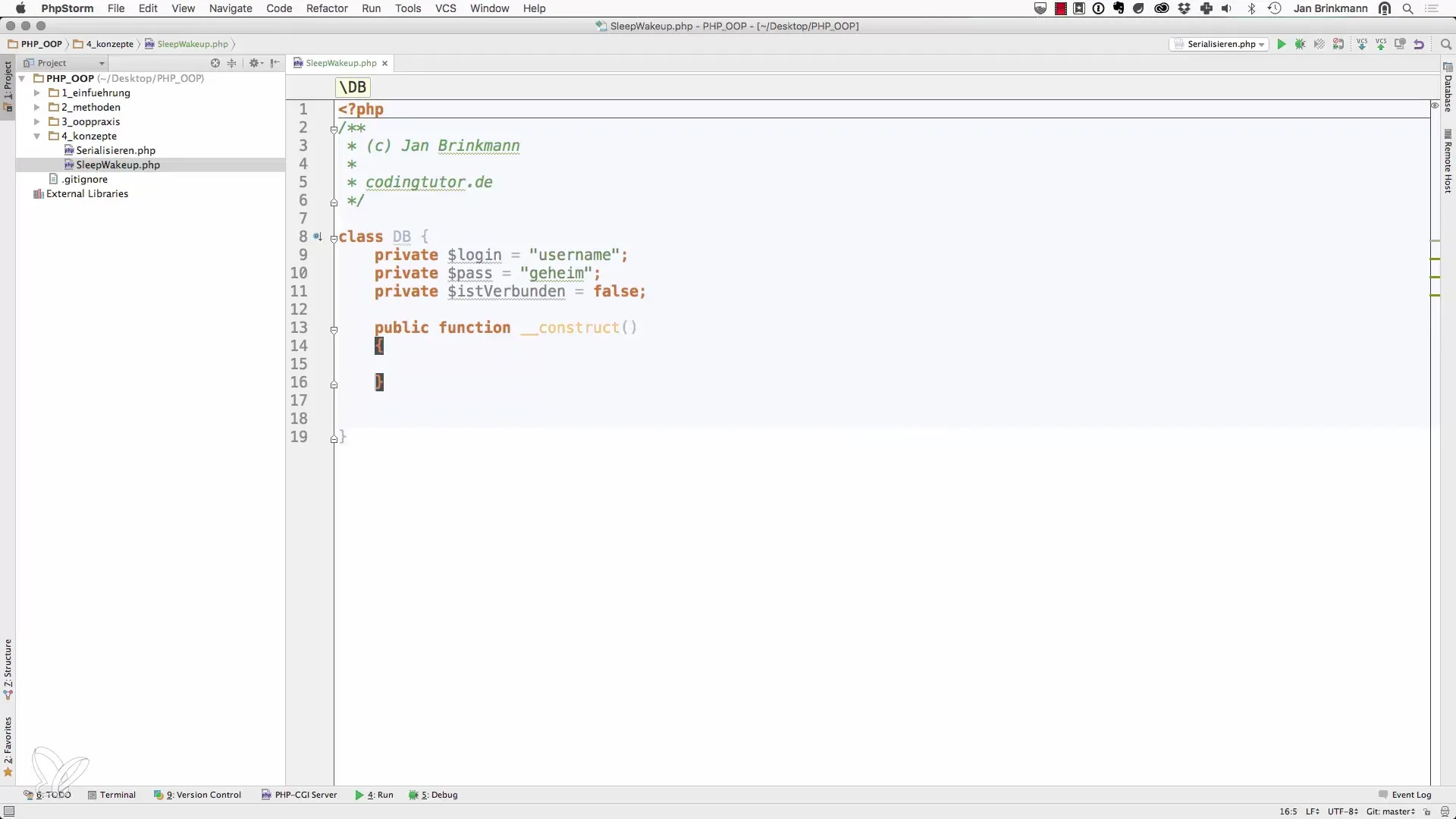
4. Implementing the Sleep Method
Now it gets exciting. To tailor serialization to your needs, you will use the sleep method. This method plays a central role as it defines which properties of an object are considered during the serialization process. You will return the login and password attributes here.
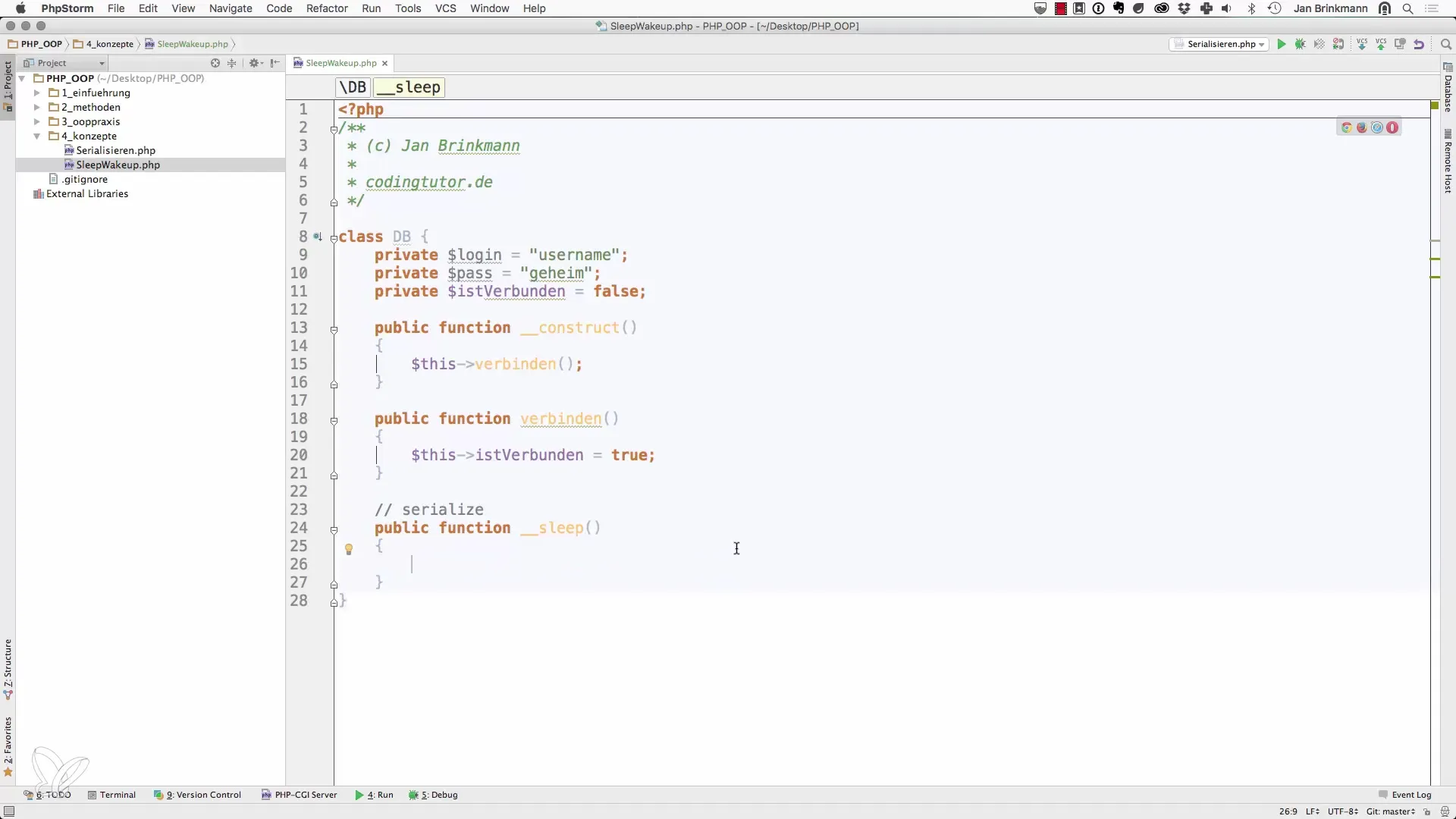
5. Utilizing the Wakeup Method
To restore the connection after deserialization, you will implement the wakeup method. This method is called when the object is deserialized. Within this method, you will ensure that the connection to the database is correctly established with the newly obtained login and password information.
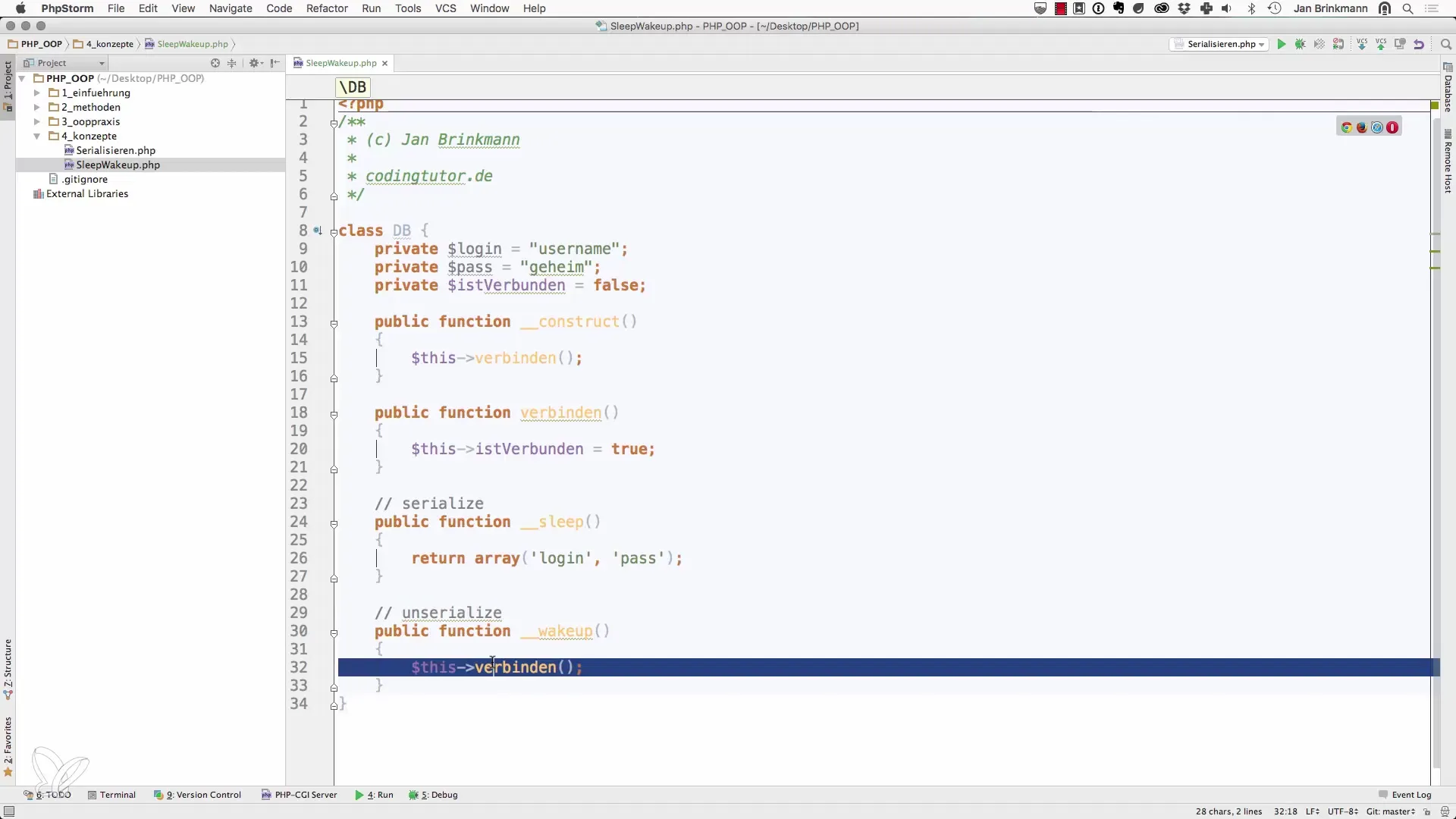
6. Testing the Implementation
To verify that everything is working as intended, you should now test your implementation. Create a new database object, establish a connection, and then serialize the object. Afterwards, analyze whether the deserialization correctly restores the state of the object.
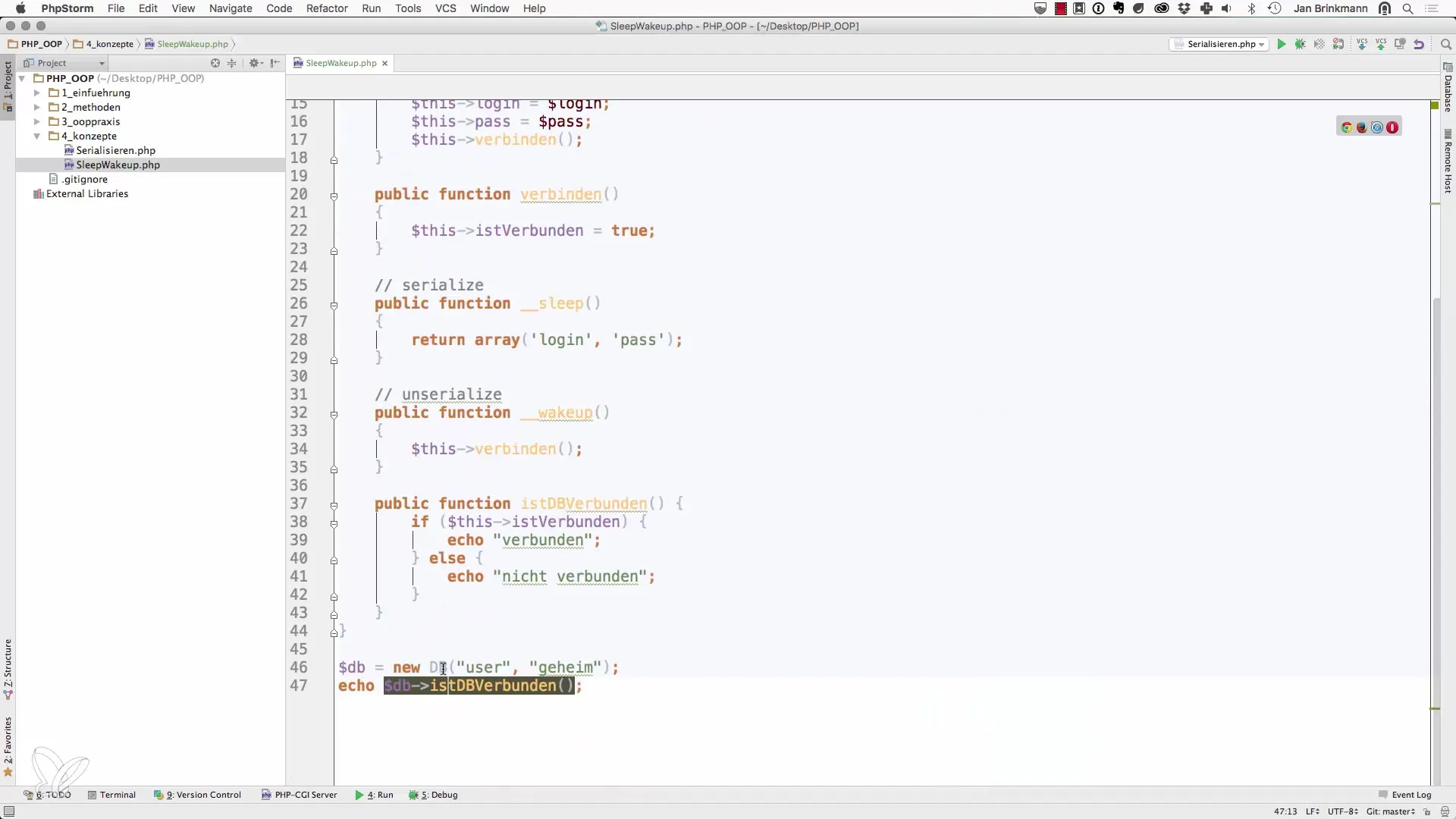
7. Checking the Connection Status
In this final phase, you want to ensure that the method for checking whether the database connection is active works. We will add a get method that returns the object's connection status. This is important for the usability of your application and allows you to receive real-time feedback on the status of your database connection.
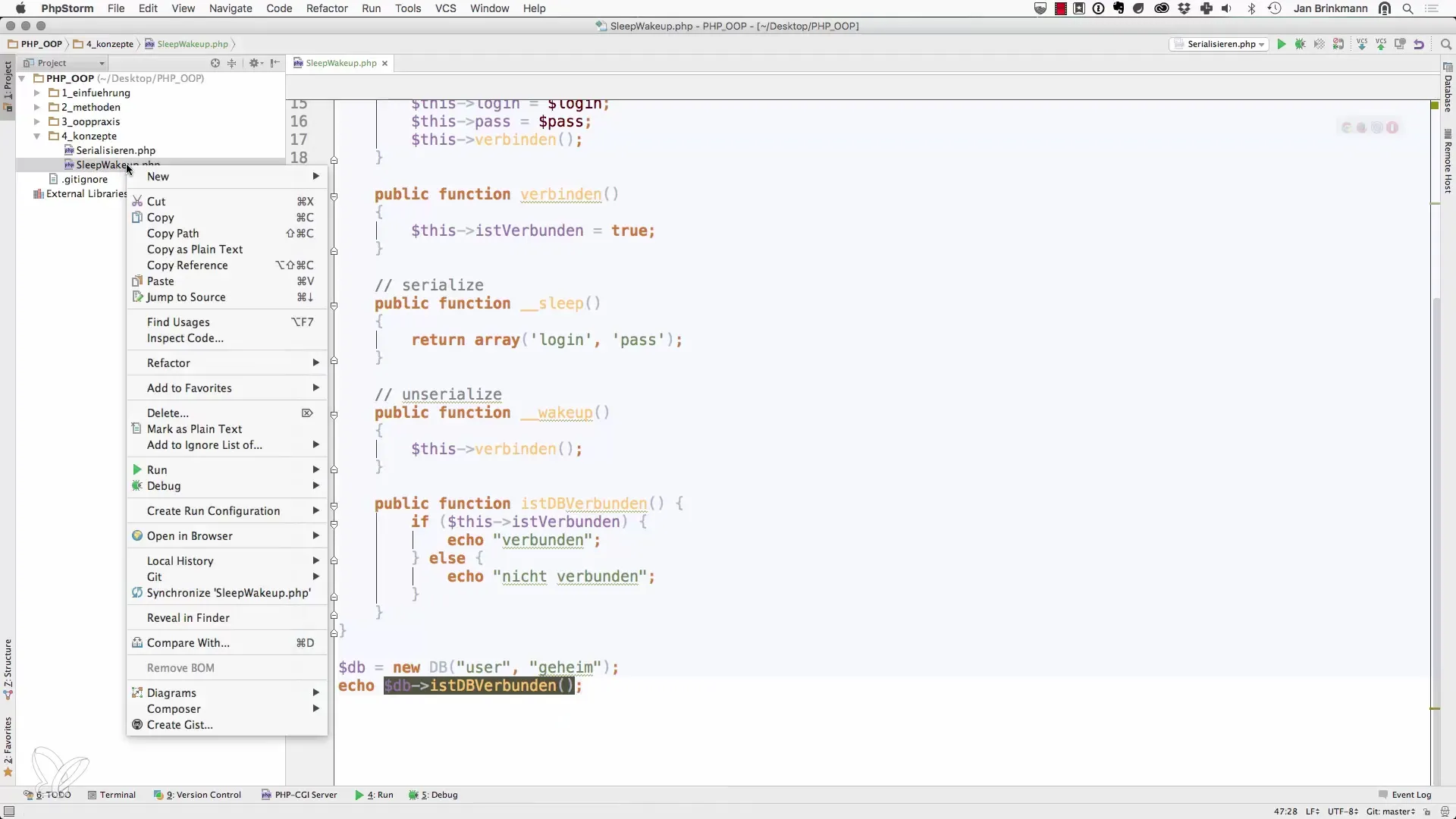
Summary - Object-Oriented Serialization in PHP - Sleep and WakeUp
In this tutorial, you learned how to use the sleep and wakeup methods in PHP to optimize the serialization process of your objects. You created a framework for handling database connections in conjunction with serialization and how to adapt to potential issues during deserialization.
Frequently Asked Questions
What is the purpose of serialization in PHP?Serialization in PHP allows the state of an object to be converted into a formatted string that can later be restored.
How do the sleep and wakeup methods work?Sleep determines which object attributes are considered during serialization, while wakeup is used to restore the object's state after deserialization.
Why is it important to consider sensitive data like passwords?To ensure the security of your application and prevent sensitive information from being stored unsecured, access to such data should be handled carefully during serialization.
How can I ensure that a database connection is successfully established?With a method to check the connection status, you can receive feedback and ensure that the connection is active at all times.


